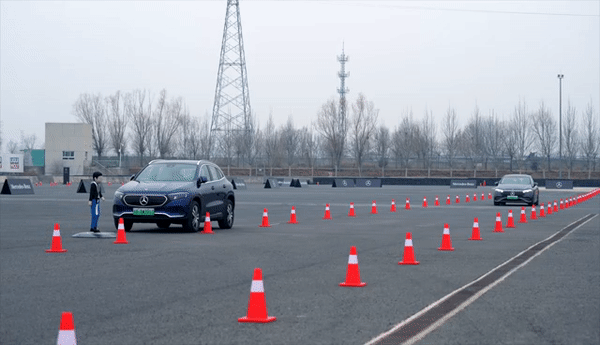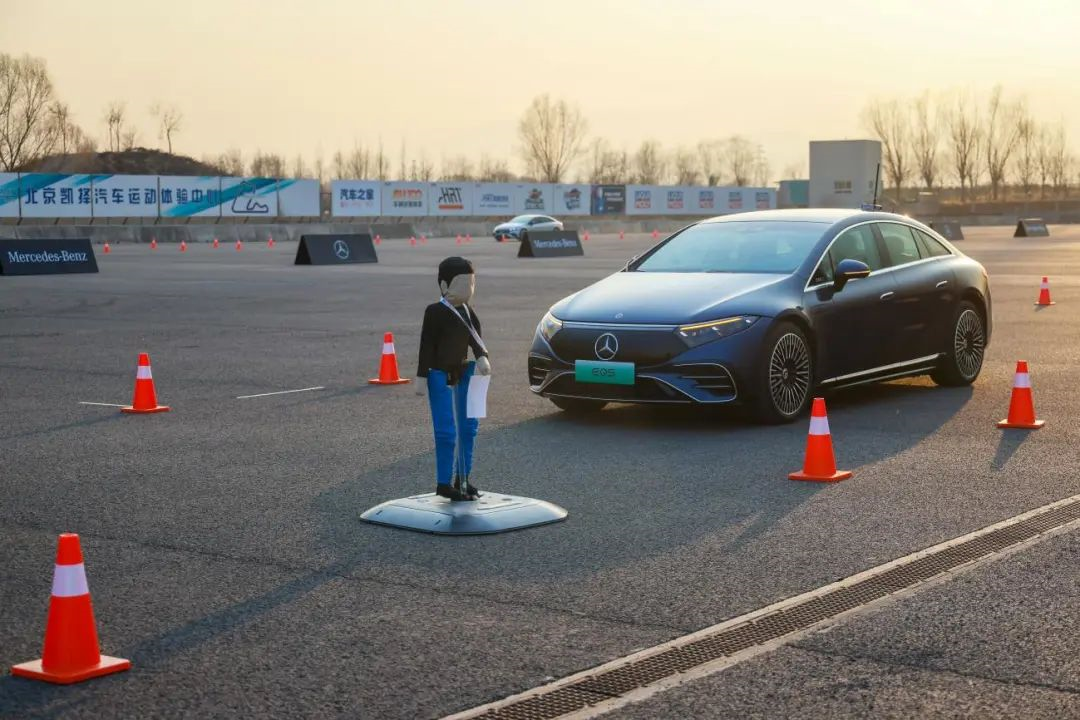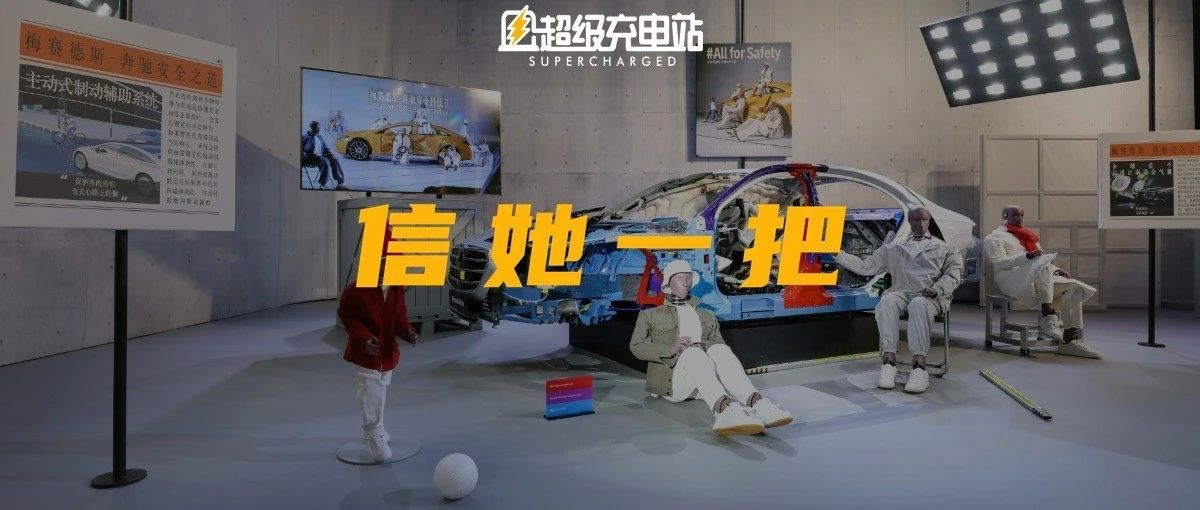Luxury Roots
To many people, Mercedes-Benz is synonymous with luxury in the automotive world. However, the development of luxury brands through independent resources in recent years has shown us that luxury isn’t built overnight. So, how did Mercedes-Benz establish itself on the luxury car lane in the early days when cars were just satisfying basic transportation needs?
When we open the Mercedes-Benz chronicles with this question in mind, we can easily find the answer in the post-World War II period. The German “Big Three” carmakers today all took part in the “luxury exam” at that time and Mercedes-Benz’s answer paper was characterized by its emphasis on “safety.”
In 1952, when the world was still convinced that “a safe car must be rigid,” Belle Barnei, the father of passive safety, achieved a significant breakthrough against the world at Mercedes-Benz – the company was granted a patent for a safe car body. The patent describes the decisive features of passive automotive safety: the car body should be divided into three parts, the rigid passenger compartment does not deform, and the front and rear crumple zones absorb collision energy to ensure passenger safety.

The Celebration of a Sci-Fi Fan
How many people, like me, consider the promotional campaigns of New Year’s blockbusters as the pre-bells of the upcoming Chinese New Year?
This Lunar New Year is a sci-fi fan’s carnival. The TV series version of “The Three-Body Problem” has just taken over from the animated version, and “The Wandering Earth 2” will also be released on the first day of the Lunar New Year.
This Spring Festival is also a feast for children who have been away from home for several years. At this moment, during the “Xiao Nian” just passed, are you already lying in your hometown cottage or rushing home, or are you like me, self-crowned as a “chosen working person,” sticking to the office?

No matter where you are, that magical slogan, “there are millions of roads, safety comes first,” still remains deeply ingrained. Even when working, why am I so honored to call myself a “chosen one”? It’s because I have experienced the benefits of safety up close – during the Mercedes-Benz Safety Technology Day.In September 1959, a Mercedes-Benz 190 D tailfin simulated car raced towards a pile of obstacles. The Mercedes-Benz completed its first comprehensive collision test at the Sindelfingen factory, with the high-speed collision details recorded at 1,000 frames per second.

This was Mercedes-Benz’s “first crash,” which tested the scientific safety of the car body and opened the curtain of human automotive collision testing research.
And the reason why luxury brands can stand out is because they have a set of rules that are different from those of ordinary people. This was true of the first crash 60 years ago, and it remains true when cutting open the latest Mercedes-Benz S in half today.
How to Resist Damage
In January 2023, the halved S was presented in front of me in Beijing.
At first glance, besides the inexplicable excitement of cutting a million-dollar luxury car in half, Mercedes-Benz uses different colors to coat different materials. The largest blue area is aluminum, which combines lightness and strength; the red areas of the front wheel arch and B-pillar are high-strength steel, supplementing the key strength; and the purple areas of the upper part of the A-pillar and B-pillar are ultra-high-strength steel, preserving the key parts of the passenger compartment.

Mercedes-Benz certainly did not do all this just for show. In fact, the reason for the cut-open S was to express Mercedes-Benz’s understanding of the four stages of holistic safety: driving safety, emergency situations, mid-collision, and post-collision.

This concept, proposed in the 1990s, has now been fully implemented after more than 30 years of development.
From front to back, the 2.6 million-pixel intelligent digital headlight can precisely control beam distribution in real-time according to road conditions, illuminating the road while preventing the dazzling of oncoming drivers; when collisions are unavoidable, the PRE-SAFE prevention safety system intervenes within milliseconds, while simultaneously tightening seat belts, adjusting seat positions, and automatically closing sunroofs and side windows; when a collision occurs, the safety body concept developed by Bela Barényi has undergone material and structural evolution for several decades, and the crumple zone provides more energy absorption, while the passenger compartment is more rigid. From knees to head and chest, from seat belts to seats, and the airbag distribution in the A, B, and C pillars can soften the impact on passengers. After an accident, the emergency hotline, whether triggered manually or automatically, can provide the fastest rescue services.
Standing beside this special S-Class, focusing on passive safety is the least respect for it; among the fully armed passive safety, what fascinates me most is the safety details that Mercedes-Benz explores without limits.
Airbags are no longer a novelty, right? The news of “the airbag triggered and the car logo was imprinted on the owner’s face” in the past is both ridiculous and helpless, mainly because the airbag directly strikes the passengers after it is inflated and deployed. However, Mercedes-Benz uses special tubular structure airbags to inflate and position the airbags. During the deployment process, the tubular structure also achieves the effect of wrapping the occupants, thus reducing the impact force on the corresponding body parts. And that’s not all, the S-Class also integrates small airbags in the seat side cushions. In the hundreds of milliseconds before the collision is about to occur, it can push the occupants towards the direction far away from danger.

Quick Avoidance of Damage
If Mercedes-Benz shows off the muscle of passive safety with this S-Class, then the EQS L3-level automatic driving test car equipped with the DRIVE PILOT driver navigation system in the other exhibition area displays the power of active safety.

Speaking of safety, Mercedes-Benz and 2050 have an agreement: to achieve “zero fatal traffic accidents” by 2050. In order to achieve this goal, passive safety still plays the role of “the last barrier to bear”, while prevention is mainly carried out by higher-level intelligent driving.
 This is a hot knowledge sharing. As early as 2019, Mercedes-Benz became the first automaker in the world to obtain the international certification of L3 conditional autonomous driving system. DRIVE PILOT is a way for Mercedes-Benz to evolve intelligent driving from L2 to L3.
This is a hot knowledge sharing. As early as 2019, Mercedes-Benz became the first automaker in the world to obtain the international certification of L3 conditional autonomous driving system. DRIVE PILOT is a way for Mercedes-Benz to evolve intelligent driving from L2 to L3.

In addition to the sensor combination on the existing product line, DRIVE PILOT also brings lidar into the Mercedes-Benz family. Currently, Mercedes-Benz models equipped with this system have been commercially launched in Germany. A bigger news for us is that the DRIVE PILOT is currently starting testing in China, and the Chinese team has begun to participate deeply in the design and optimization of China’s road conditions.
Plug-in Hybrid Easter Egg
A static workshop can only arouse spiritual waves at most, and physical feelings still rely on experience to stimulate.
Yes, how can a safety technology event lack the rubber smell of AEB emergency braking? Even better, Mercedes-Benz has added a new Easter egg between the static and dynamic experience, the latest plug-in hybrid technology representative C 350 e L.

Shamefully, due to various reasons, we have not been exposed to this new car exhibited at the Chengdu Auto Show. We will not go into details about the new C-Class. Instead, we focus on this brand new fourth-generation plug-in hybrid technology. If you look at the technical configuration superficially, the P2 motor plug-in hybrid scheme will inevitably make me somewhat underestimate it. However, the 80km journey from Haidian Jinyu Zhi Manufacture Workshop to Changping Kaize Racing Circuit has taught me that empiricism is not good.

Regarding this plug-in hybrid, power is not the key concern for me. The five driving modes it possesses are no different from any other plug-in hybrid. Even the power under pure electric mode is somewhat flat. Under hybrid and sport mode, the 2.0T 150kW, 320Nm engine and the 95kW, 440Nm motor paired with a 9-speed gearbox still maintain the strength of the P2 scheme. Mr. Wang Xiaoyu from Huxiu has verified this, and thanks to Mr. Wang’s passionate 30 seconds, our pure green energy consumption table has added 0.8L/100km of fuel consumption.
What I care about is its range, energy consumption and fast charging. This C 350 e L has a pure electric range of 105km in the WLTC test cycle. As for the accuracy of Mercedes’ displayed pure electric range, our company has gained some natural experience as the first EQS user in Asia. In fact, it is true that we drove 80km and the displayed pure electric range indicated that there were still 23km left after arriving at Kaiser, adding up to 103km, a reliable performance as usual.

If we must point out some flaws of this PHEV system, it actually supports 10%-80% DC fast charging in 21 minutes, but the DC fast charging port still needs to be additionally purchased.
No surprises
At the open space of Kaiser, Mercedes set up two AEB experiences for us, pedestrian crossing the lane and stationary obstacles, while the demonstration vehicle was EQS.

The pedestrian-crossing-the-lane test is divided into two sub-items, unobstructed and “ghost head”. In the former, we drove forward at a speed of 40km/h, and as soon as the simulated dummy appeared in our field of vision, we released the accelerator. EQS started to alert us when the simulated dummy was about 10 meters away, increased braking force when we were about 6 meters away from the dummy, and stopped the vehicle 1 meter before the dummy.

As for the latter, we moved forward at the same speed, but the dummy entered our field of vision at a closer distance due to the vehicle’s obstruction. The reaction distance of the subsequent actions was also correspondingly shortened. The alert sounded when the dummy was about 10 meters away, and then AEB quickly intervened, stopping the vehicle before the dummy in the same way. It should be noted that these distances are only estimated from my personal in-car perspective and are for reference only.“`markdown

Testing of stationary obstacles was conducted with the speed set to 60km/h. In both of my experiences, the results were consistent and safe when braking. However, there were some differences in the process. During the first test, EQS showed obvious two-stage braking – identification of the obstacle in front, followed by light braking, then triggering AEB (Automatic Emergency Braking) for intense braking as the distance gets closer. In the second test, the obstacle was identified even more accurately, and the ABS light did not flash throughout the whole process, nor did I hear any noise of the tires slipping.
This actually proves once again that the functions of identifying stationary obstacles and AEB are more like probabilistic events. At low speeds, in many cases, they can help us safeguard the final defense line before a crash. It can be a bottom line, but we should not rely on it. In fact, this also complies with the definition of L2-level intelligent driving as defined by regulations, which L2 needs to run under the supervision of human drivers.

If we want even more reckless time in the car, we can still wait for it. After all, Mercedes-Benz promised to take responsibility for accidents caused by L3-level DRIVE PILOT, and DRIVE PILOT is about to begin testing in China. After all, Mercedes-Benz has always been committed to achieving “zero fatal traffic accidents” by 2050.
By then, the slogan “Safety First among roads” should be stored in every car computer.

“`
This article is a translation by ChatGPT of a Chinese report from 42HOW. If you have any questions about it, please email bd@42how.com.
